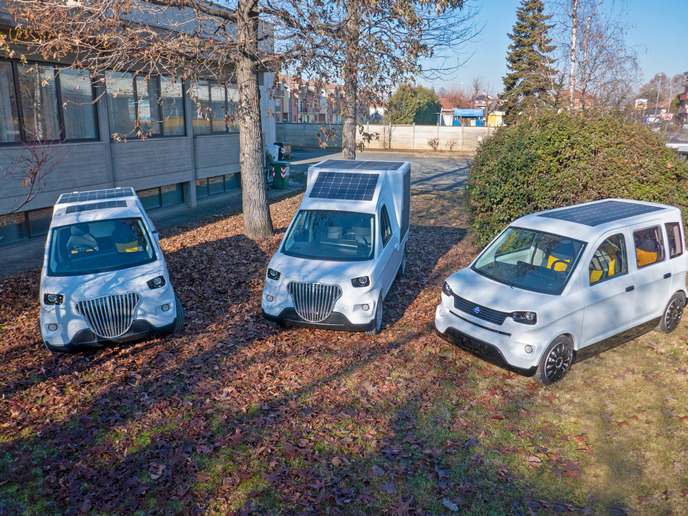Active safety and low-cost manufacturing in sustainable urban mobility
While the current electric vehicle debate focuses on batteries and electric powertrains efficiency, and consequently vehicle range, the automotive industry’s major challenge remains the reduction of energy, time and costs in manufacturing body frames (chassis). The EU-funded Multi-Moby(opens in new window) project has developed a scalable chassis so that its length or width can be varied by changing the size of only a few elements, enabling the more efficient production of multi-passenger and multi-purpose commercial vans(opens in new window). Project partner I-FEVS has previously demonstrated modularity and scalability in several EU projects, such as WIDE-MOB, PLUS-MOBY and DEMOBASE. Multi-Moby expands on this work, resulting in an automated design process where construction of the chassis and motorised axles do not require moulds of any kind. Thanks to the use of a robotised laser system to cut the high-strength steel tubes for welding of the complete chassis, there is no need for complex templates. Everything, including doors, axle systems, suspension arms and wheel hubs, can be performed in a microfactory(opens in new window) floor of size 1 500 m².
A technology for safer vehicles in the future
The active safety systems developed by Multi-Moby partner University of Surrey make the vehicles future-proof in the context of vehicle-to-everything (V2X) connectivity. “For example, the cloud could elaborate the information from several connected vehicles and determine the position of possible low tire-road friction patches, which would be transmitted to the approaching vehicles,” explains project dissemination leader Aldo Sorniotti. “Therefore, preview-based active safety controllers could take advantage of such V2X information.” Three such active safety controllers have been developed. Firstly, a traction control system utilising data from the cloud identifies upcoming low-friction road patches, and pre-emptively prevents wheel spin. In addition, an antilock braking system (ABS) uses road friction data from the cloud to prevent wheel locking in advance. Finally, a pre-emptive braking function slows down the vehicle if the current speed is safety critical for the upcoming road curvature, again based on road friction data.
Optimisation of features to expand potential
“One of our goals, which is still work-in-progress, is to develop autonomous capabilities by adopting low-cost scanning and night vision functionalities, known as gimbals. However, after further studies, it was found that for safety and redundancy reasons, it was best to combine the gimbals with other sensors,” notes Sorniotti. The project’s remaining 7 months will be focused on achieving advanced electrical electronic architecture with implemented secured procedures for remote updates and upgrades of the firmware. Moreover, the team aims to enhance autonomous capabilities by adopting the most on-the-road-experimented sensing and computational platforms, and advanced AI-based technologies for both longitudinal and lateral dynamics active safety systems. “After the project is complete, our ambition is to introduce food and medical delivery vans with autonomous capabilities to the market within 1 year,” states Sorniotti. Moreover, the techniques used for the manufacturing of the vehicles can be transferred to different applications, such as electric bicycle and moped production.






